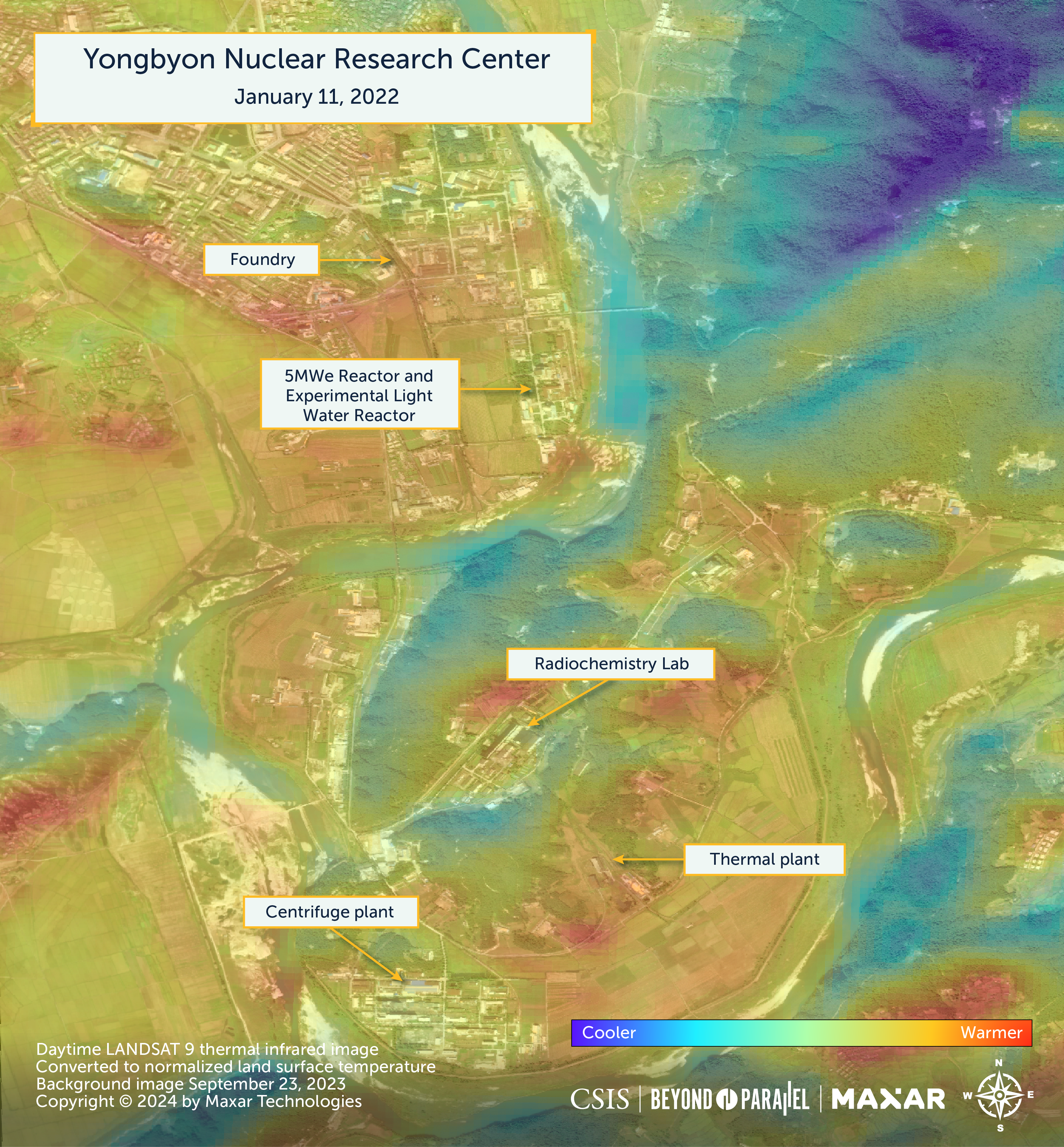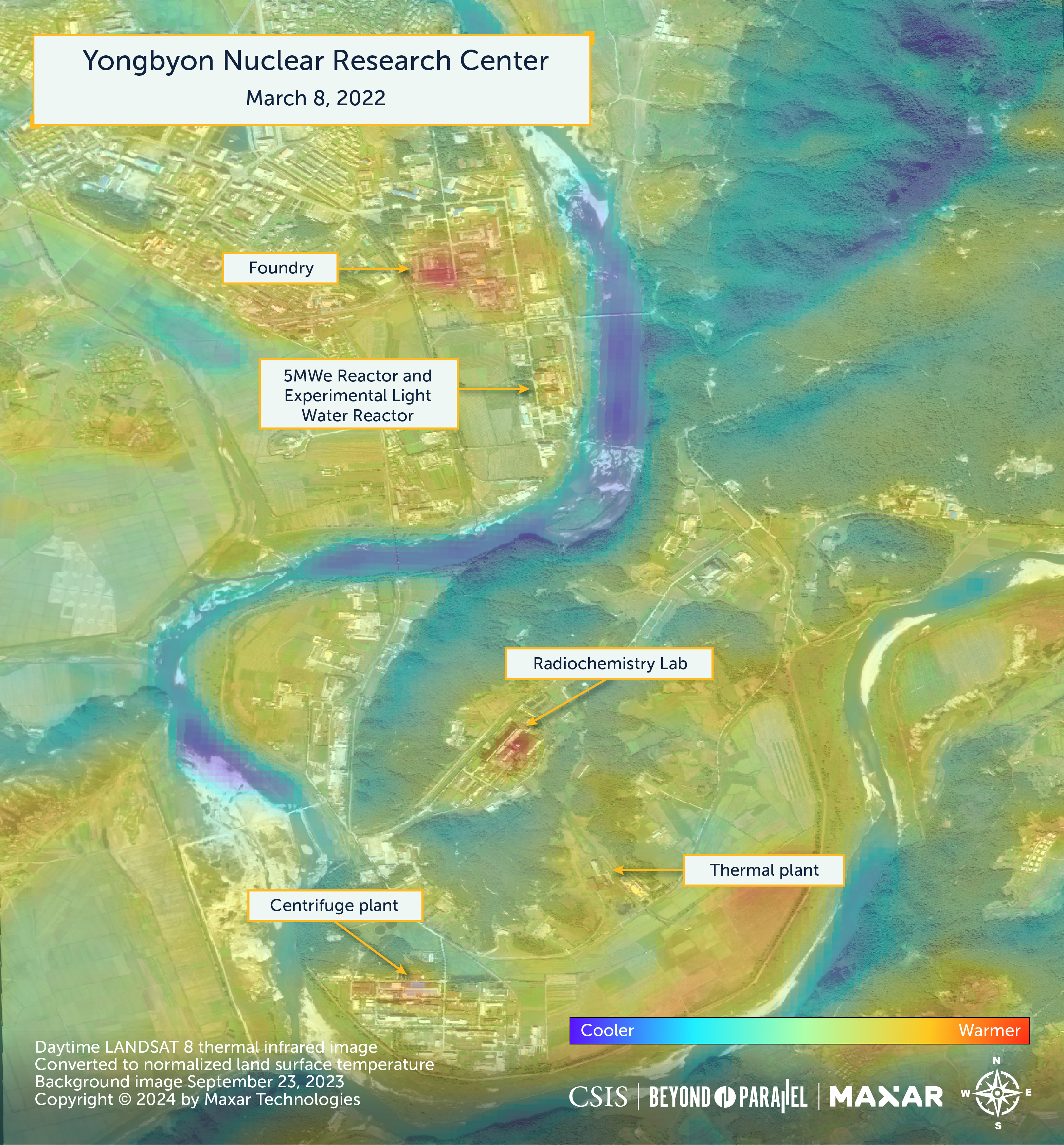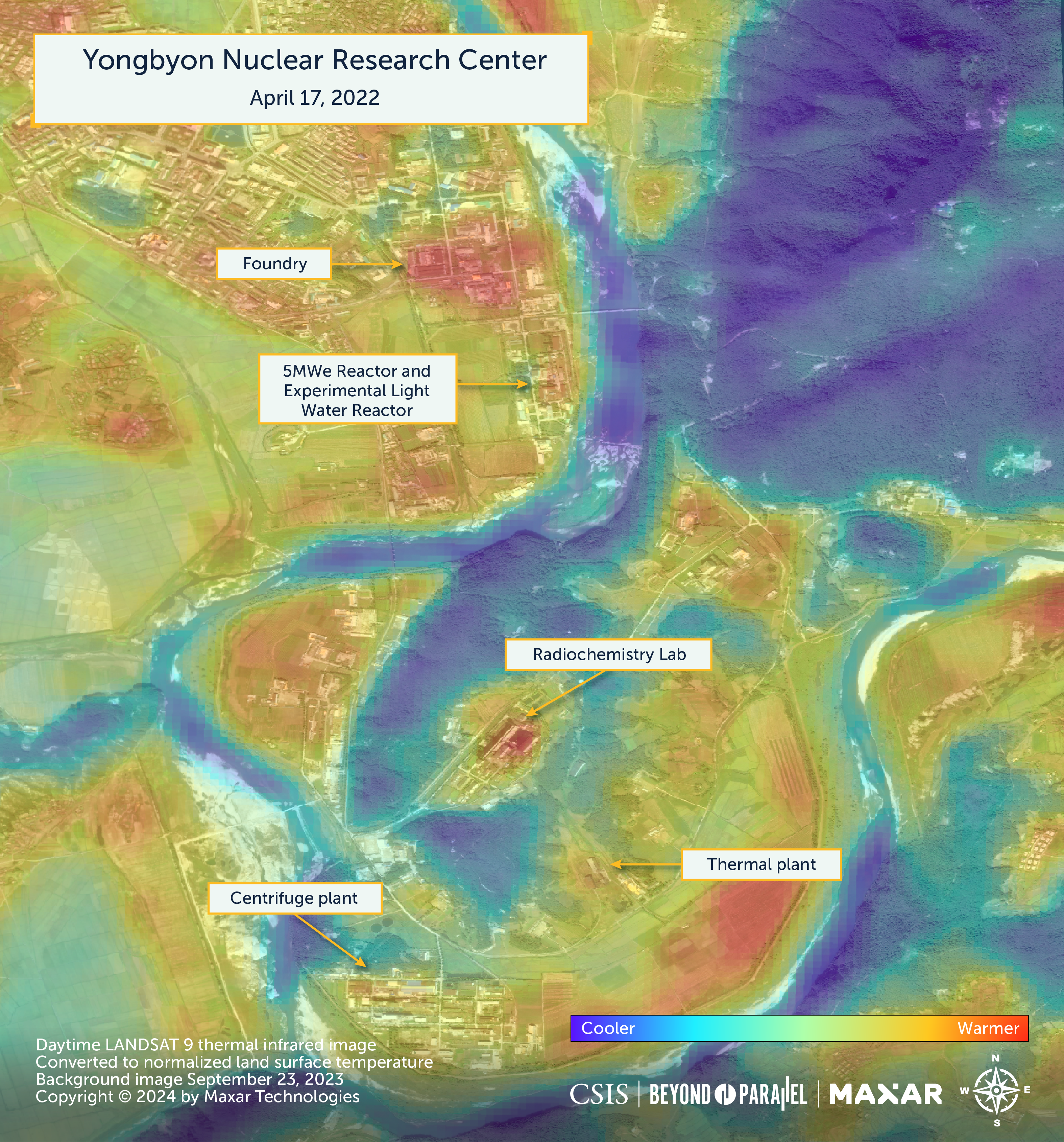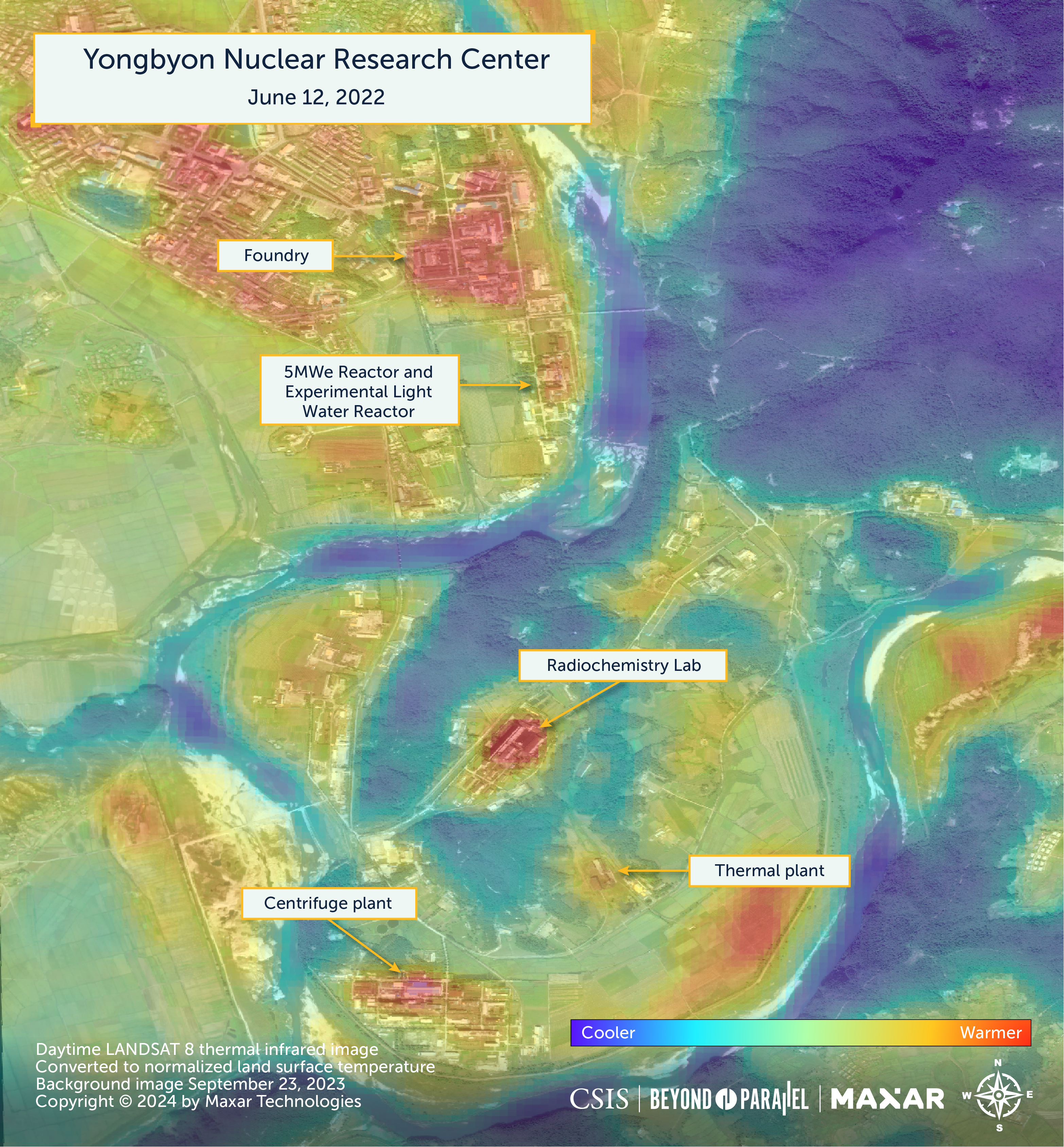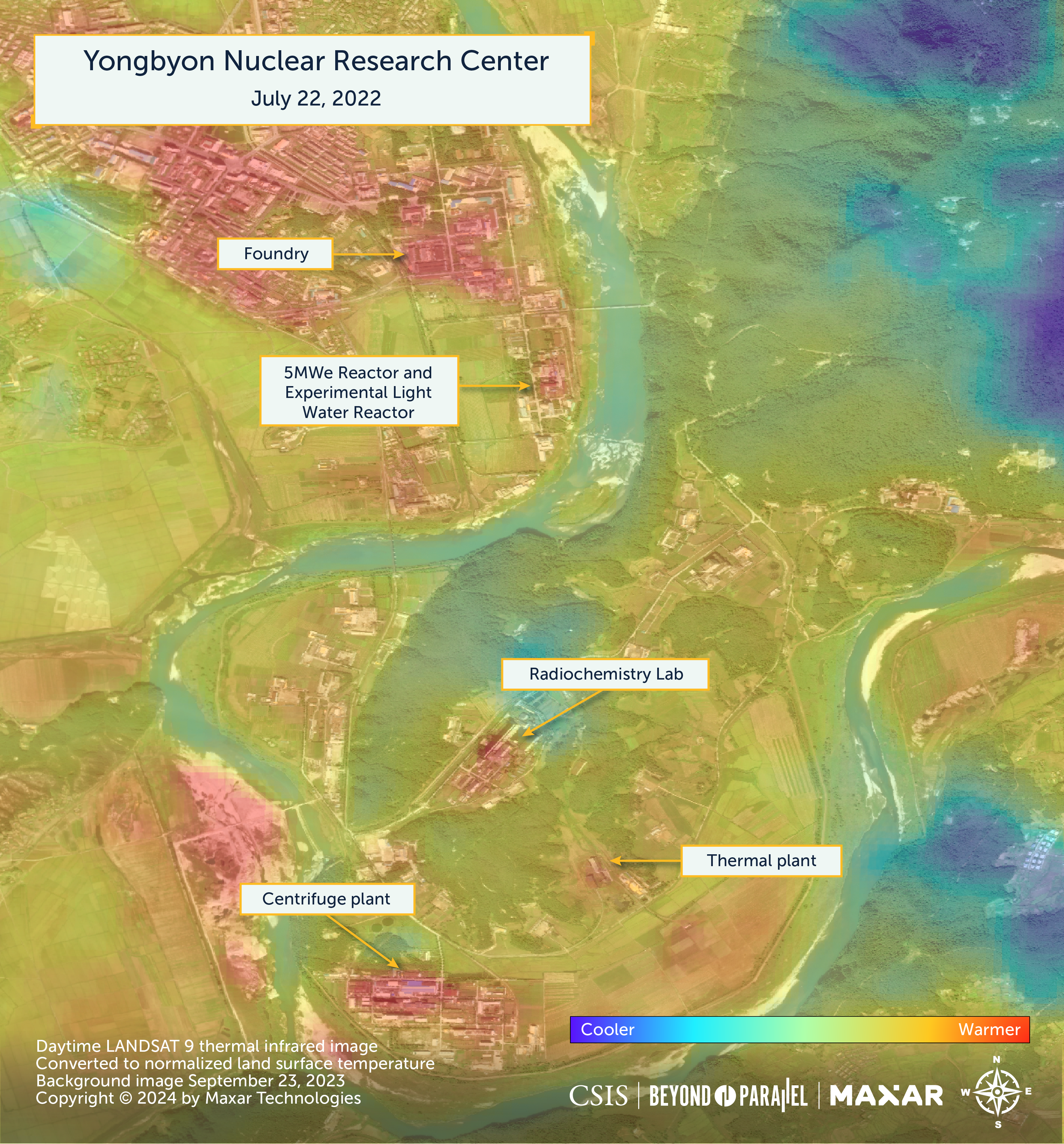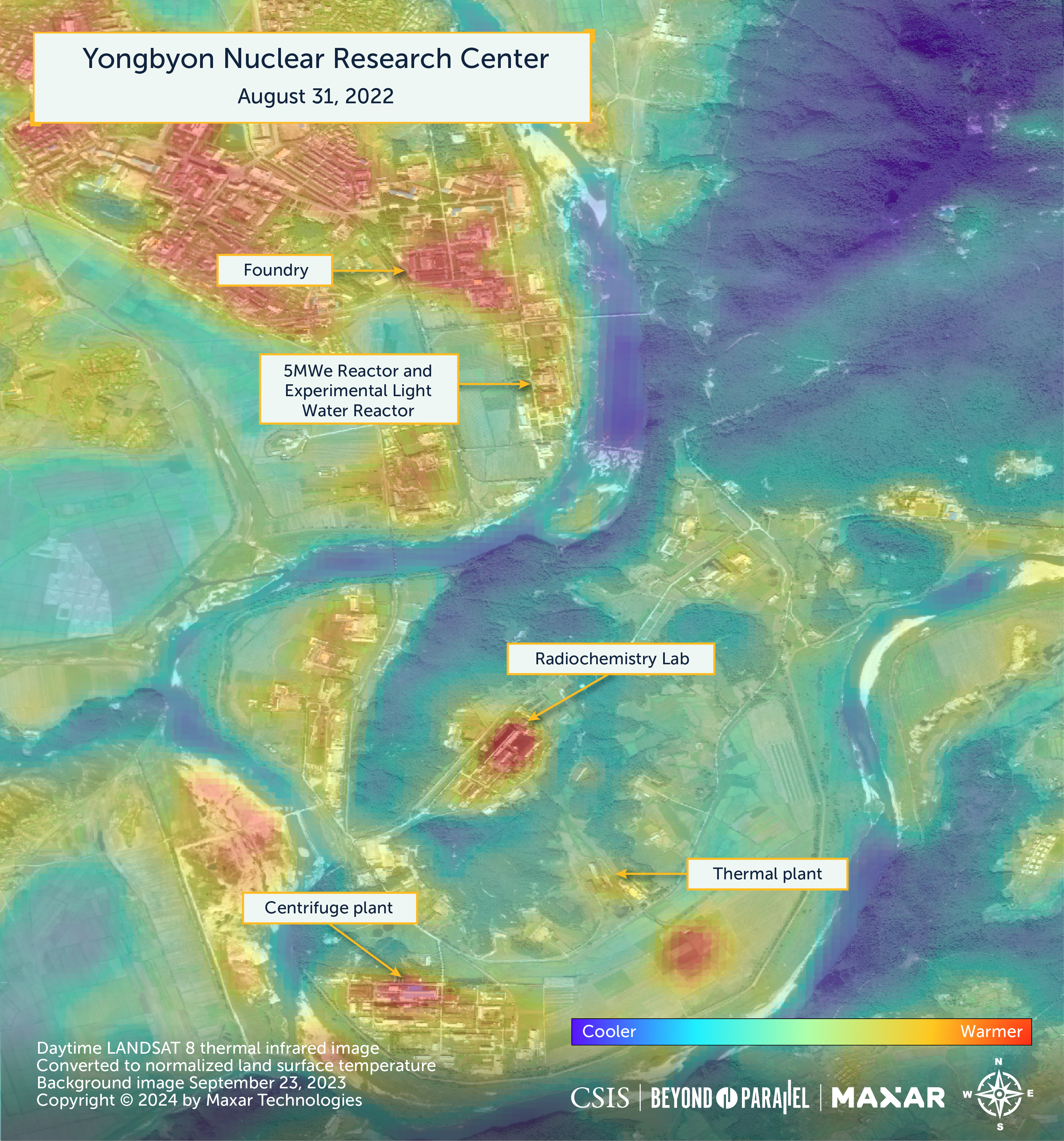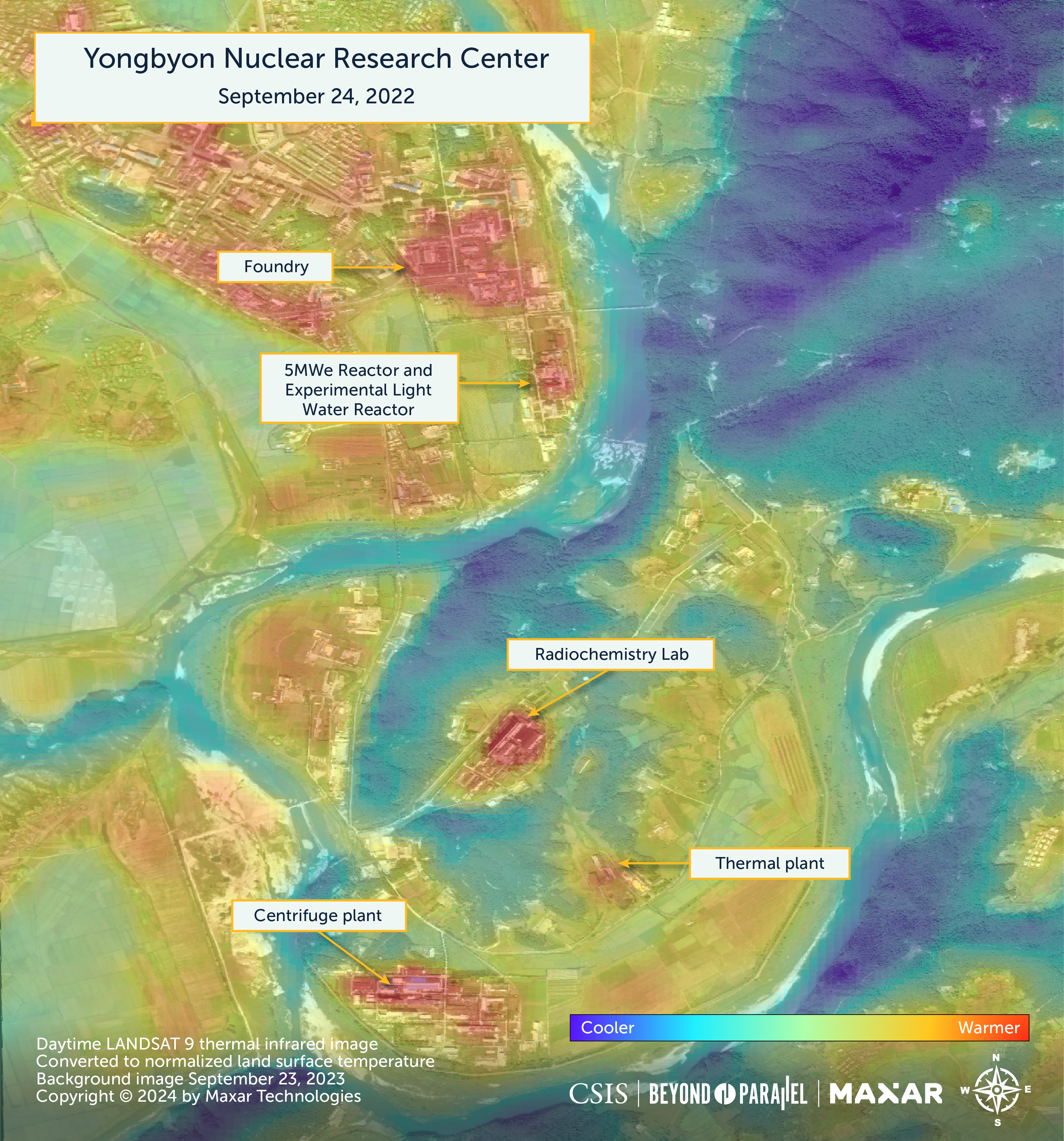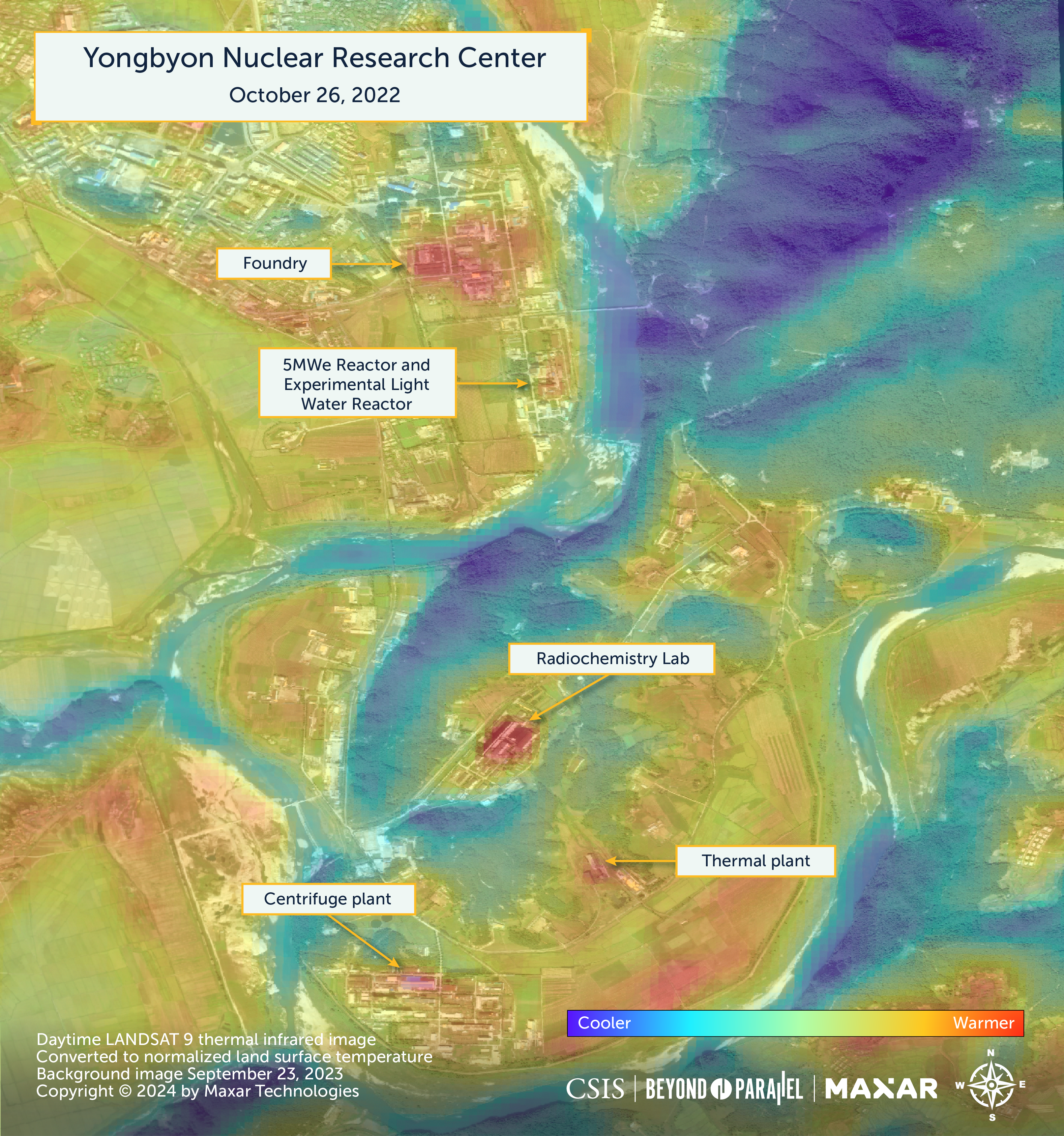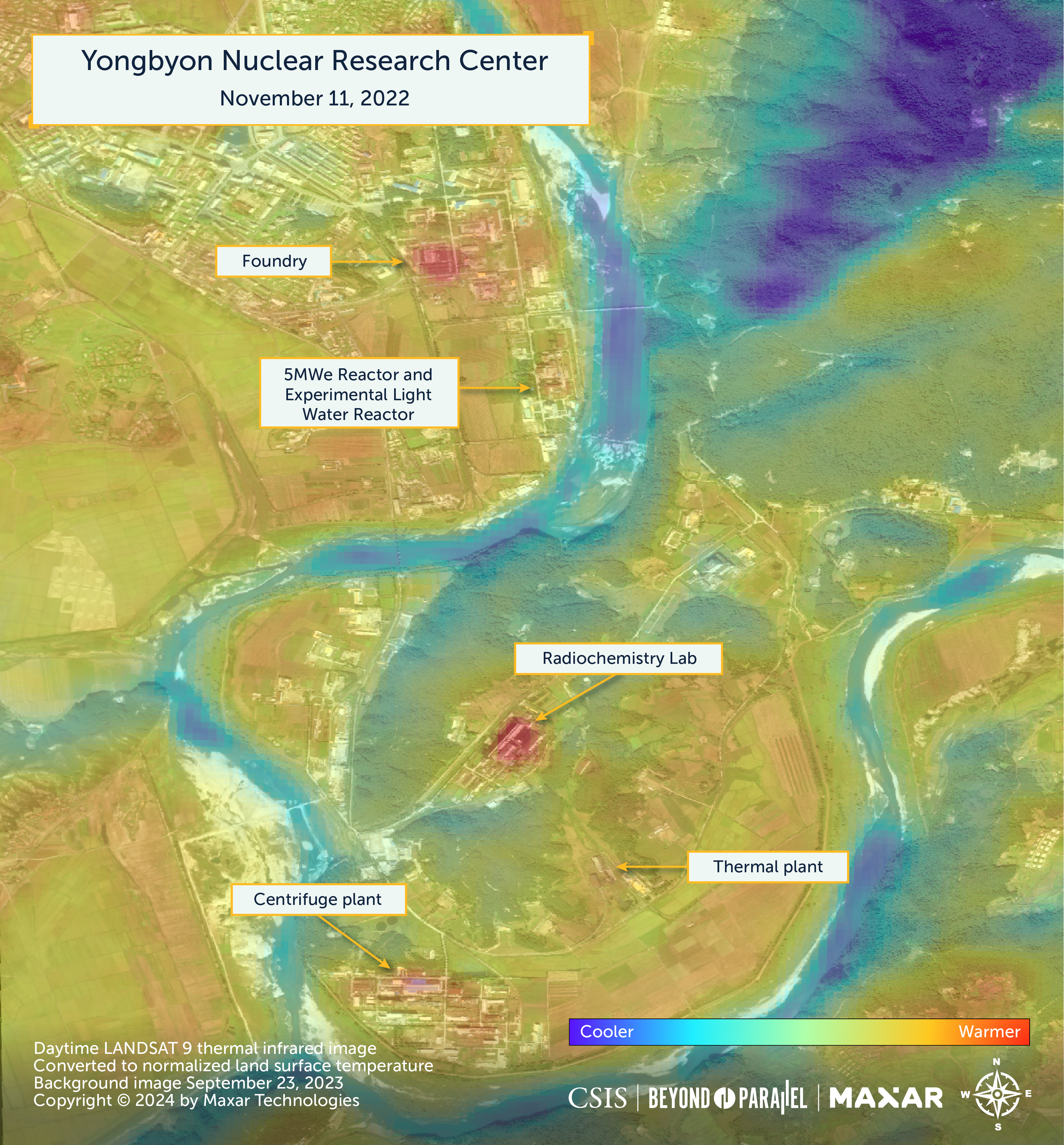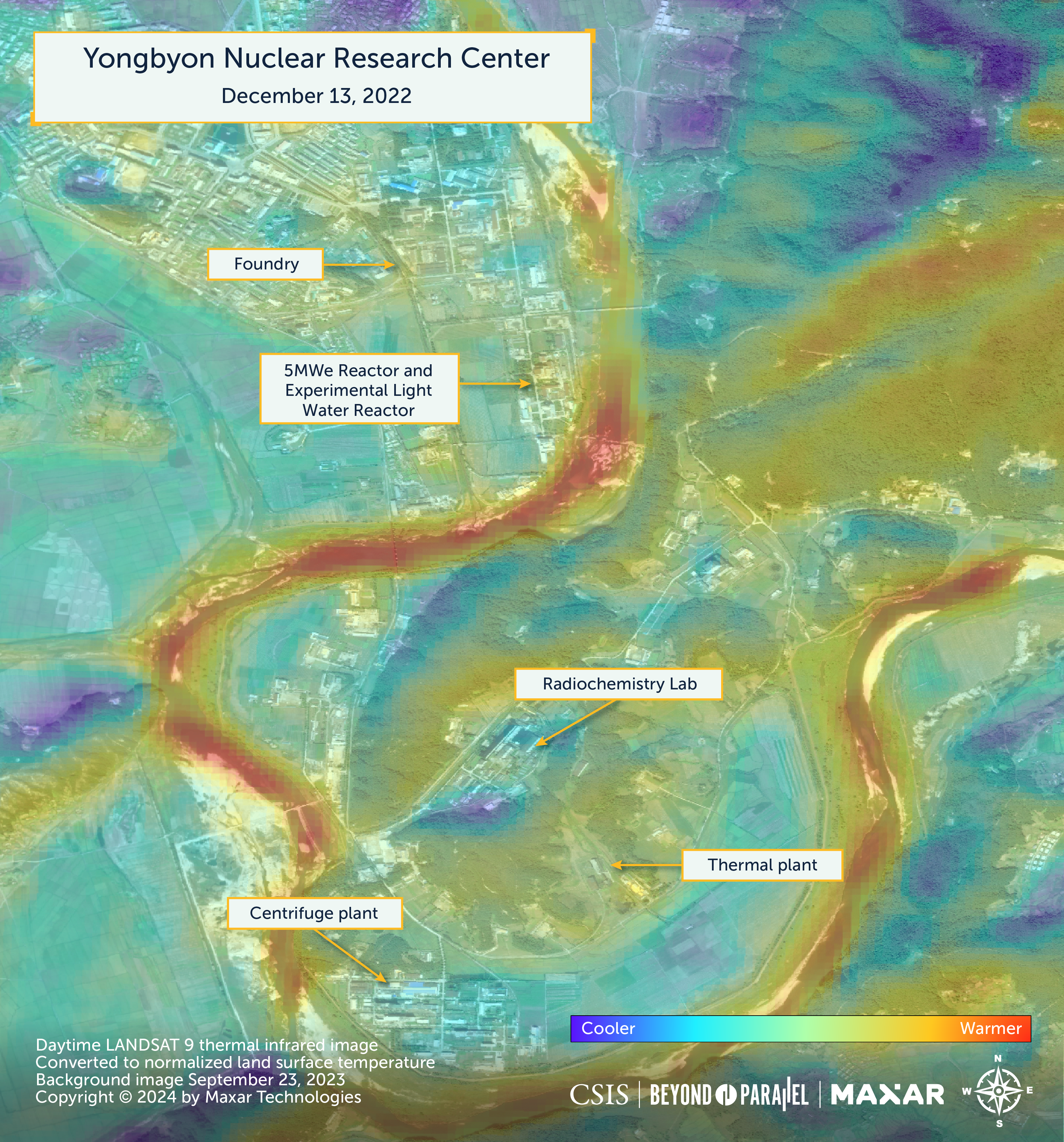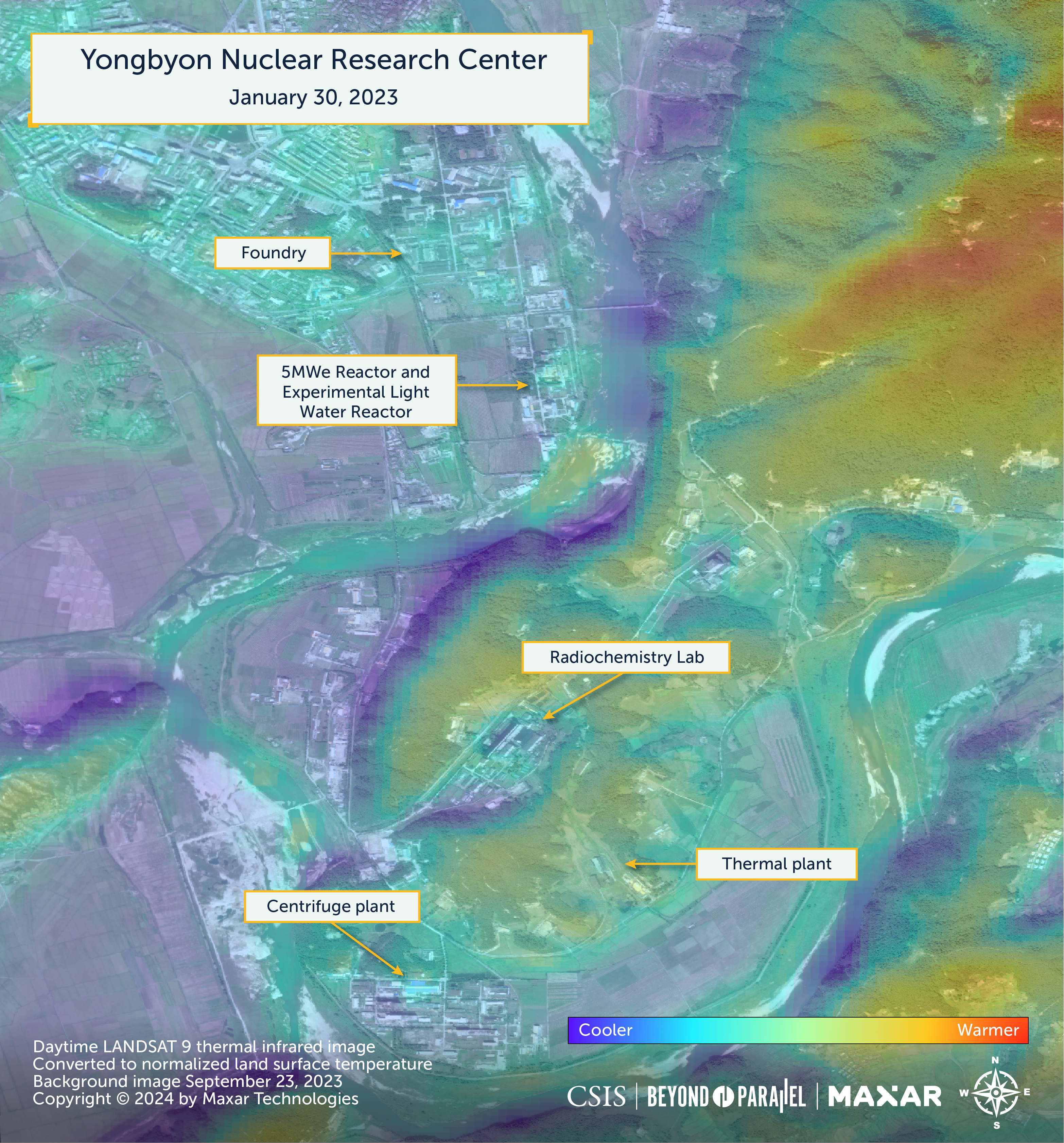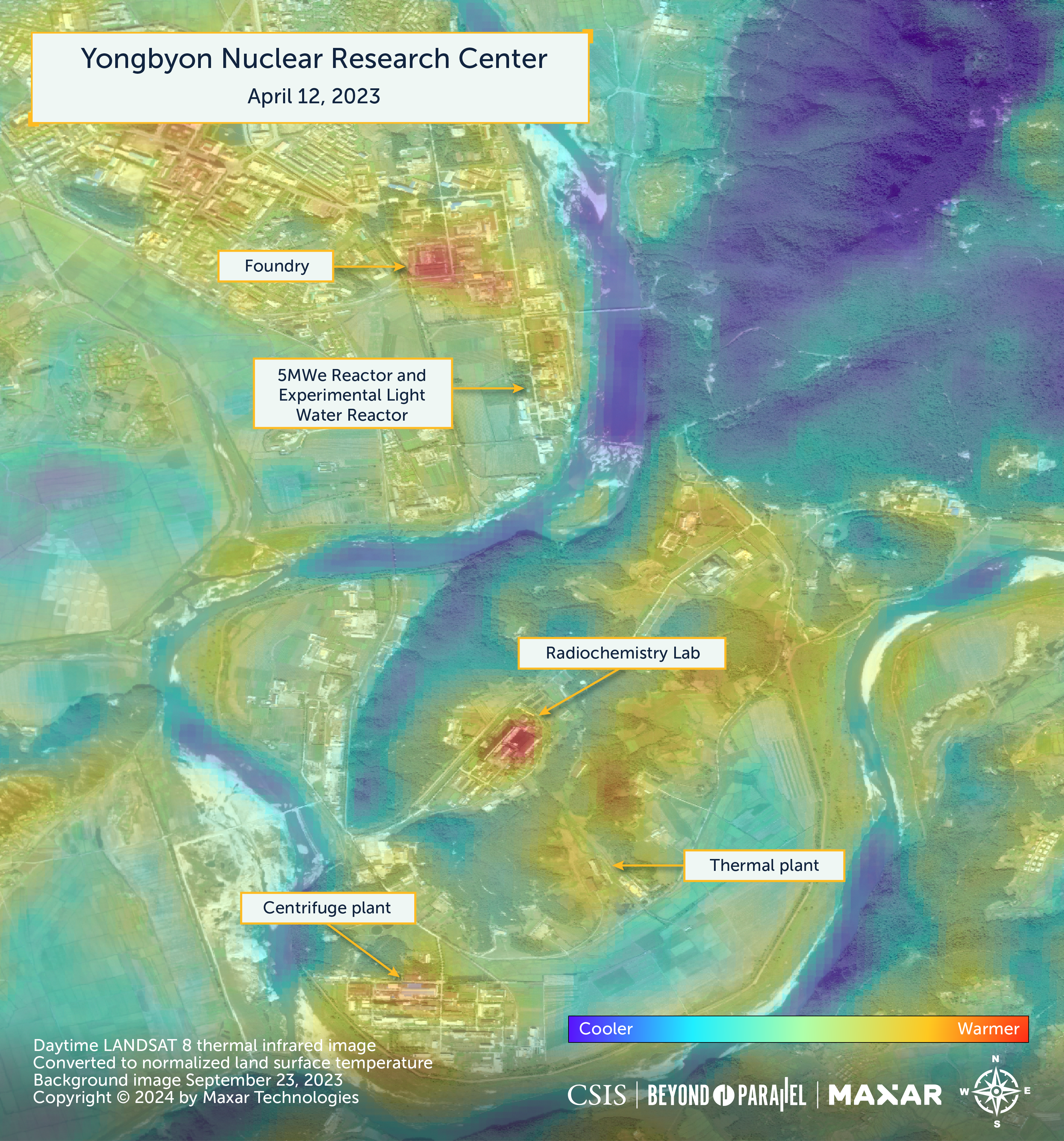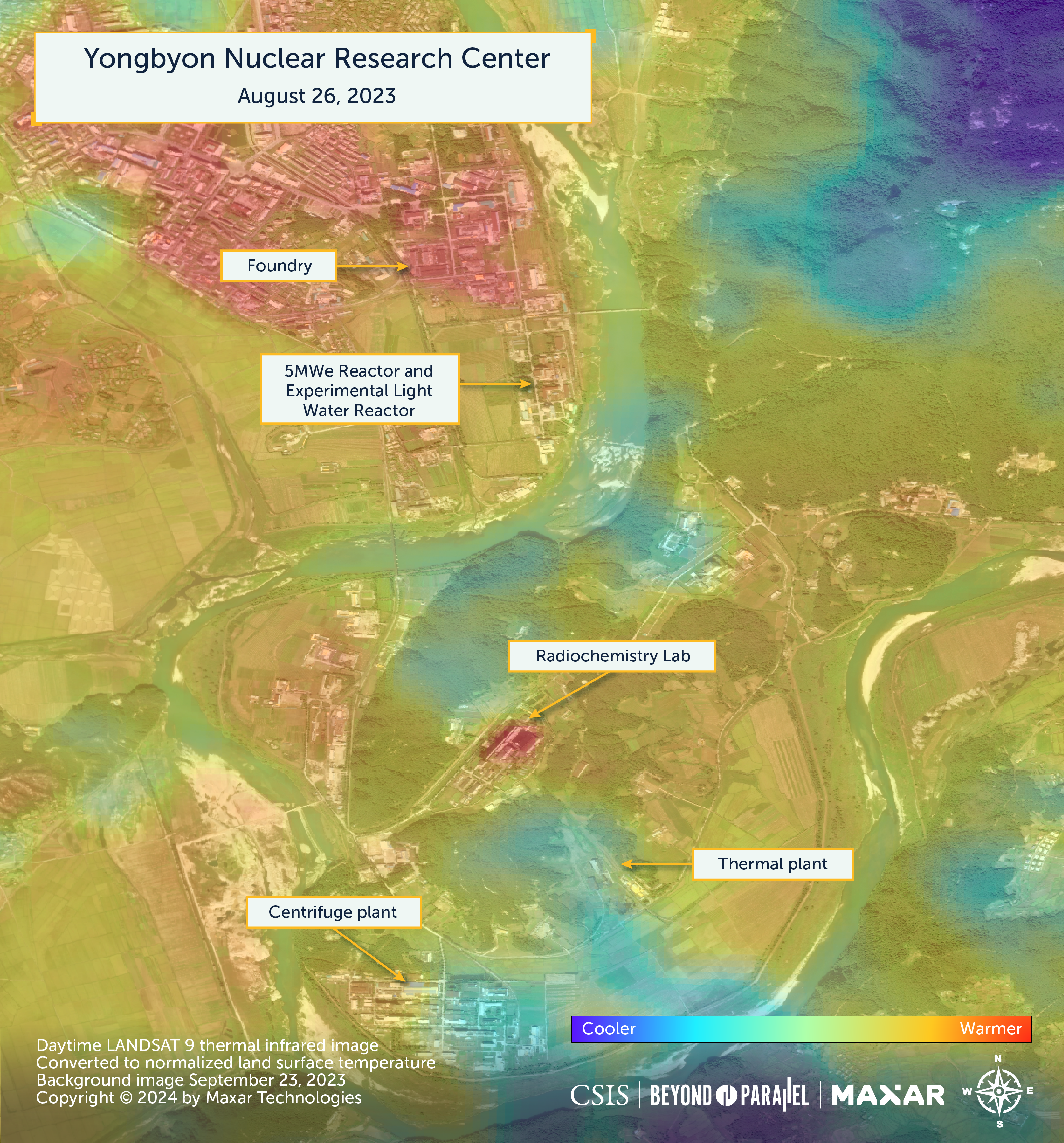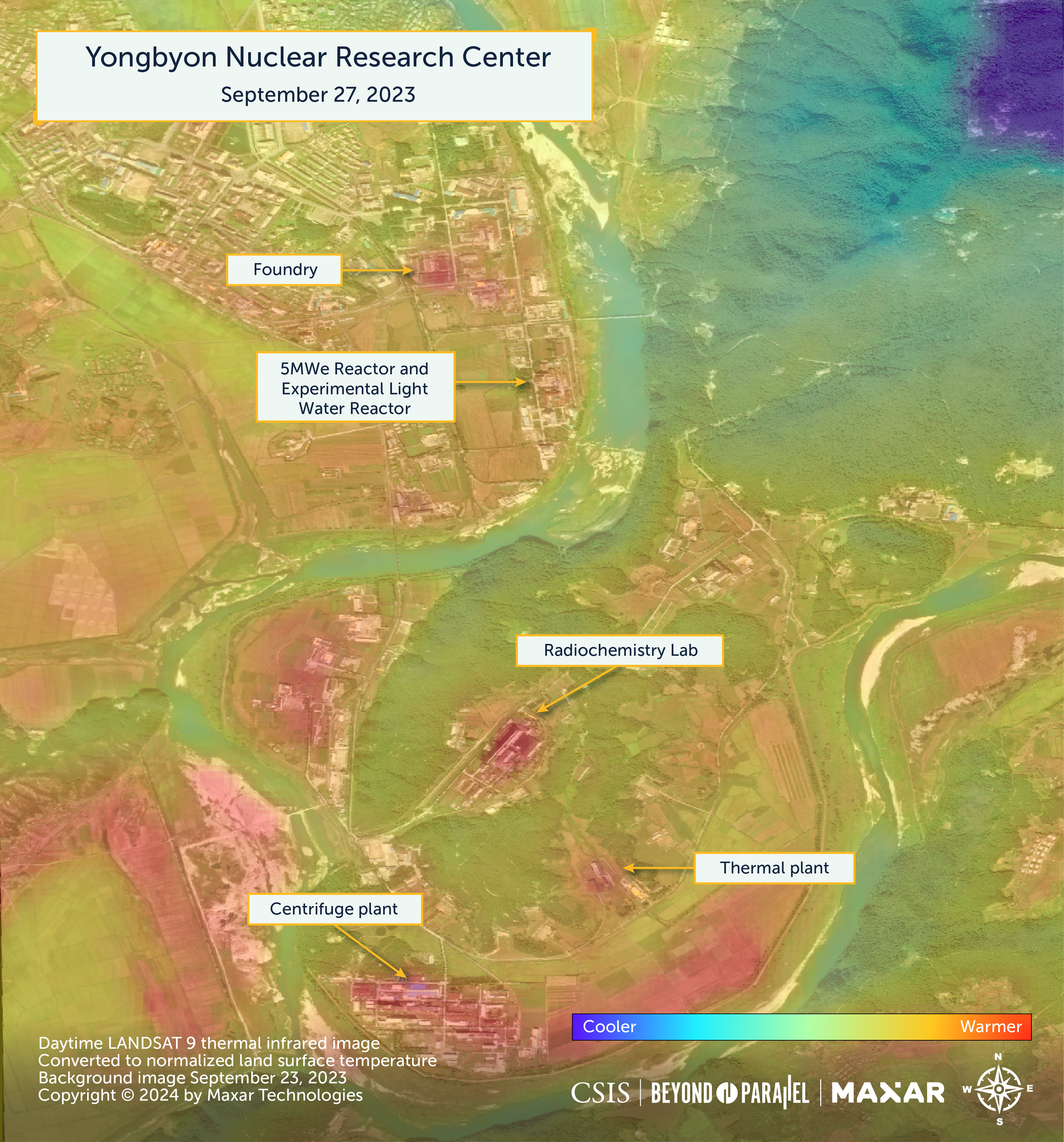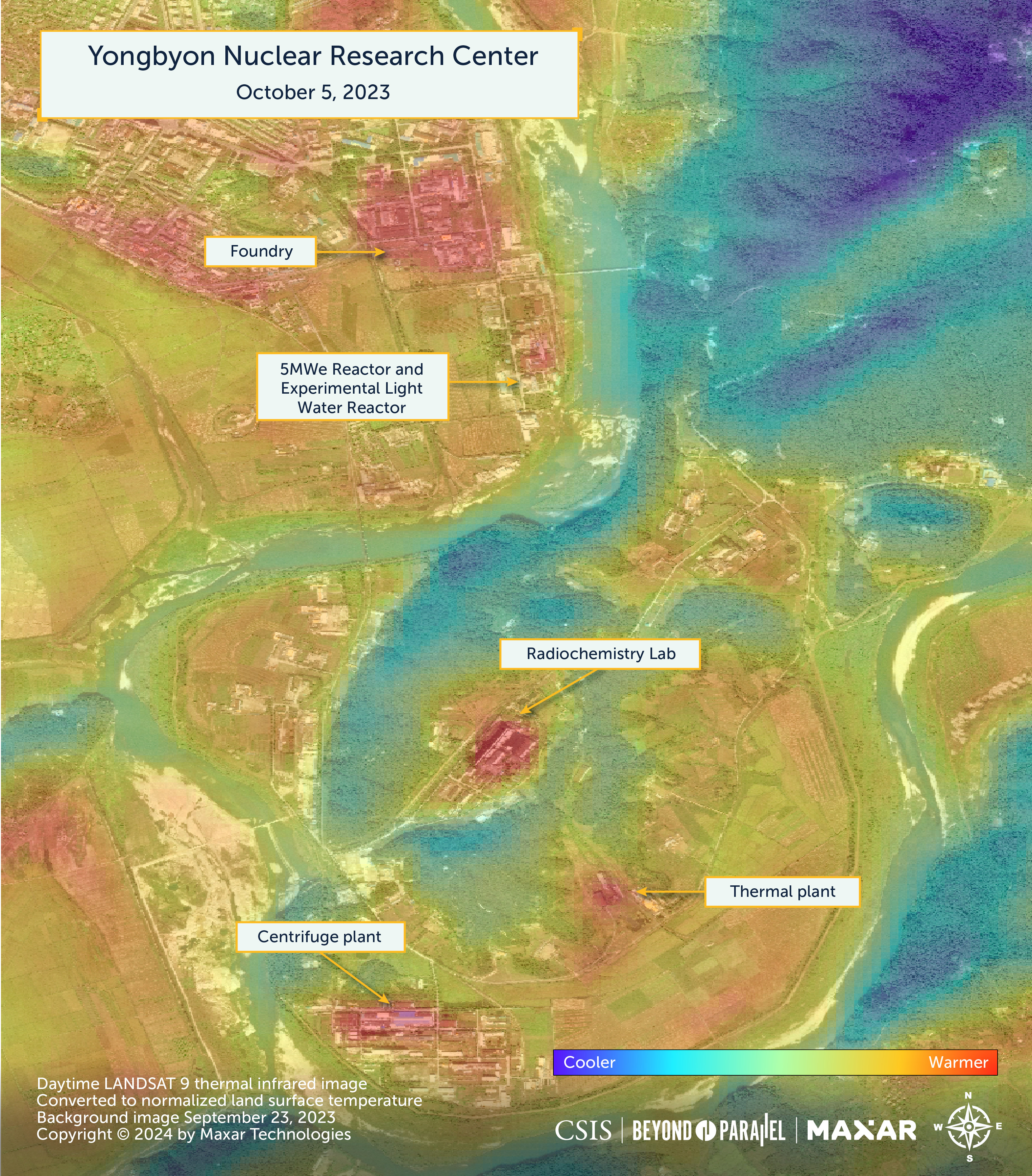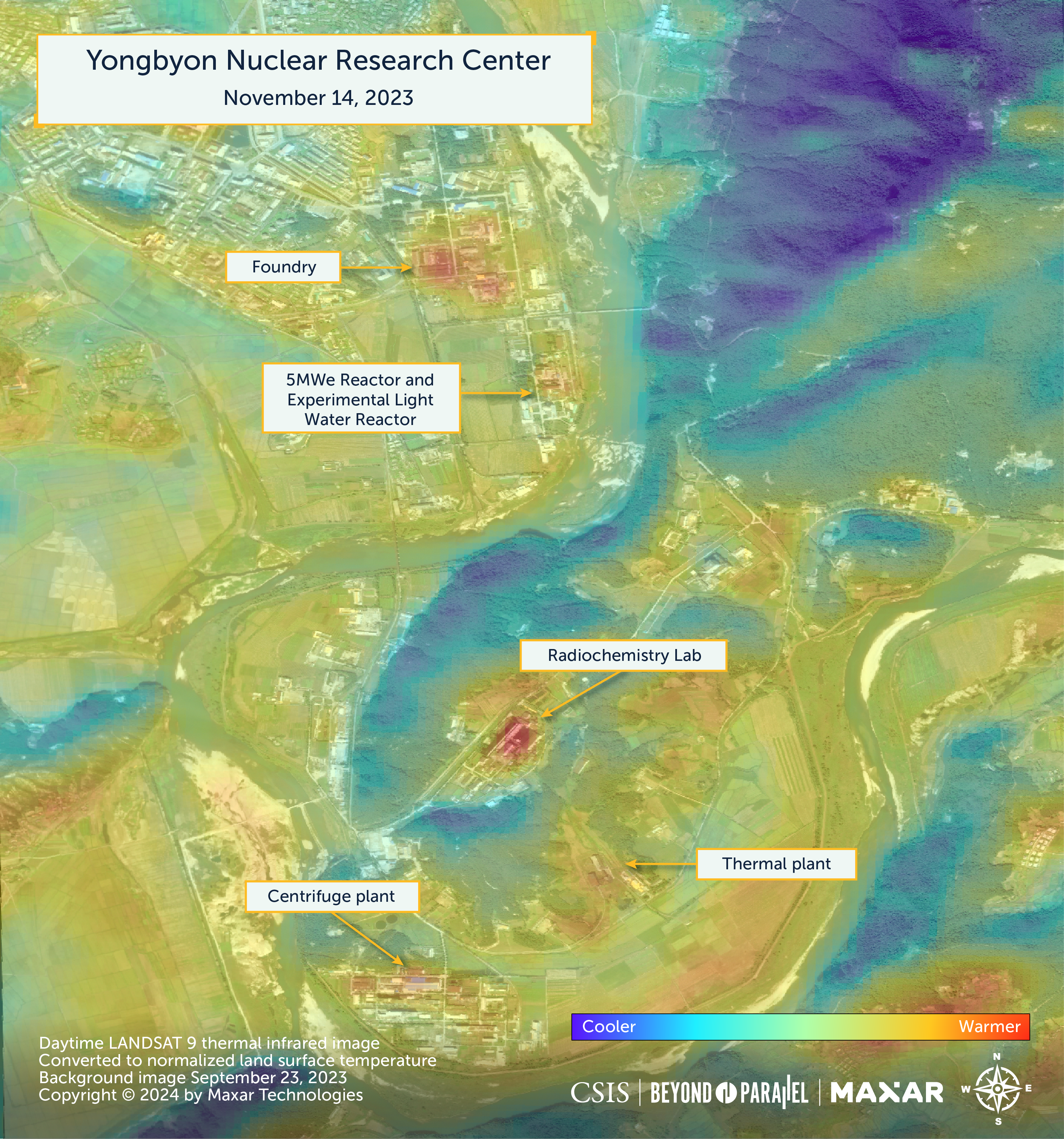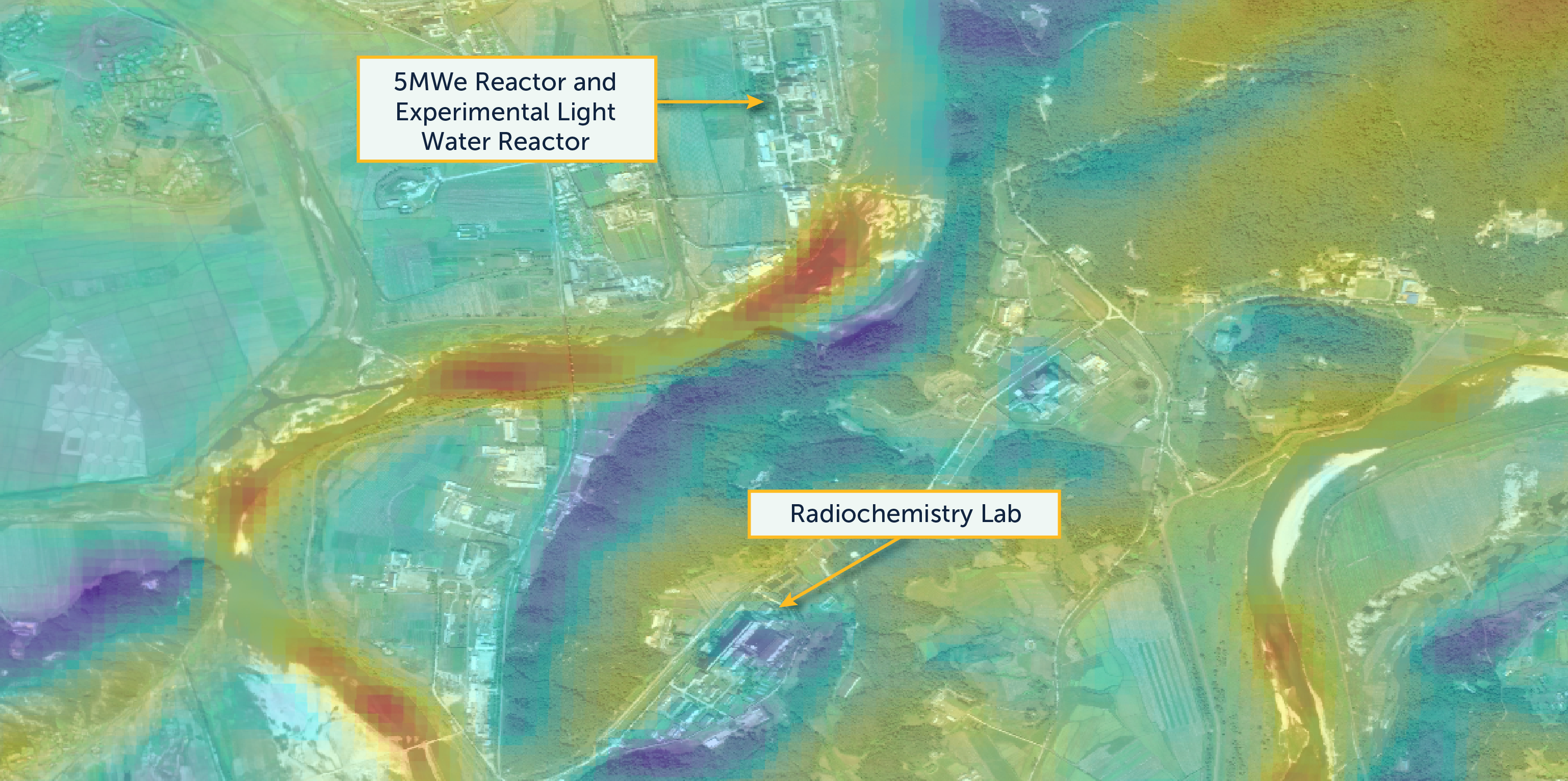
Enhancing Understanding of Yongbyon Through Thermal Imagery: Part 1
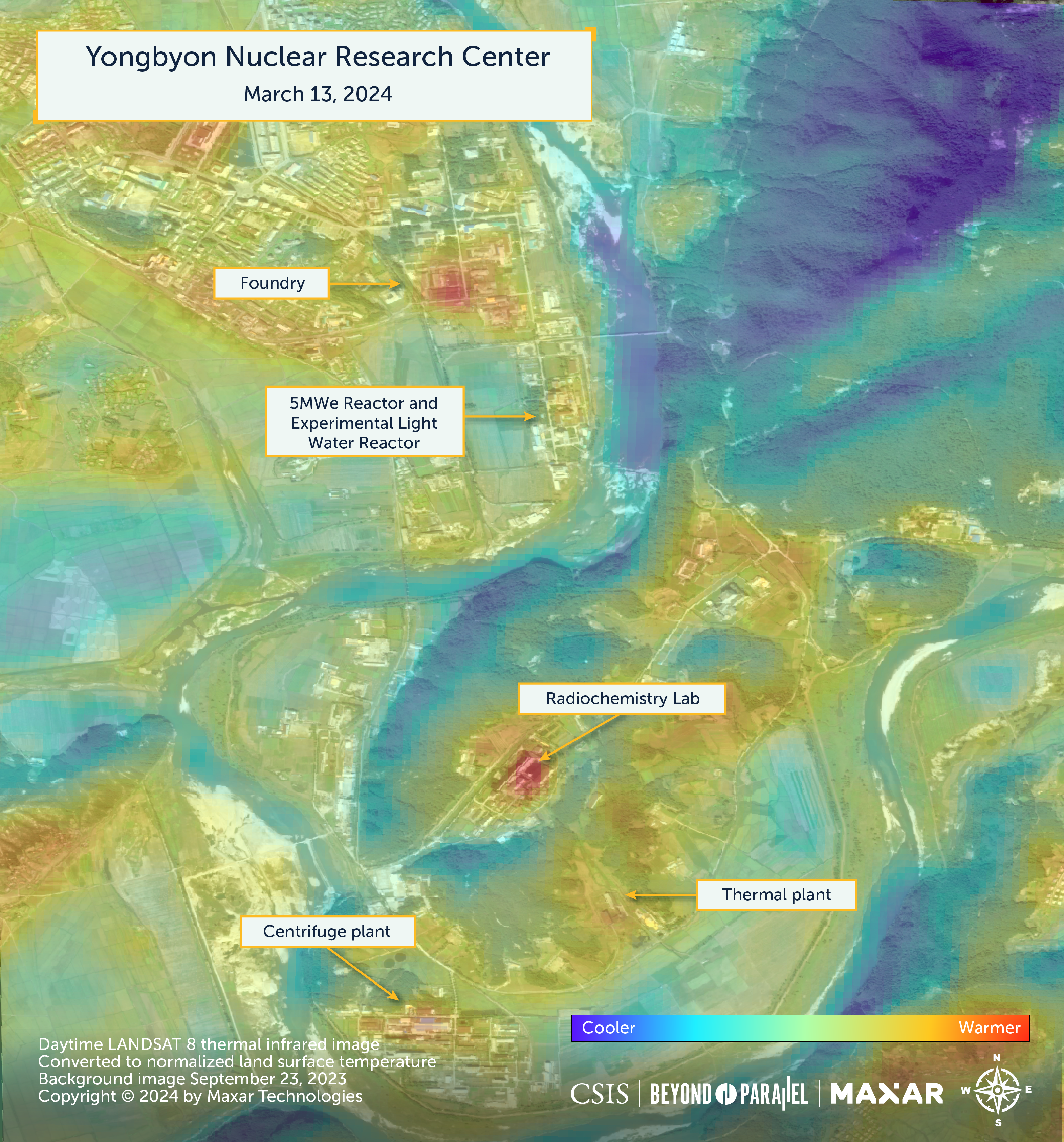
Key Findings
- North Korea’s nuclear program expansion continues, compounded by the end of UN oversight and highlighting the need for a critical evaluation of remote sensing in nuclear monitoring. To this end, Beyond Parallel conducted analysis of the Yongbyon Nuclear Research Center using 29 publicly available LANDSAT 8 and LANDSAT 9 thermal infrared (TIR) images to assess what can reasonably be discerned concerning operational status of key facilities at the center.
- This three-part series not only explores the applications of TIR analysis for future monitoring but also warns against its sole use for definitive operational assessments.
- TIR analysis over the central section of the center, where the 5MWe reactor and the Experimental Light Water Reactor are located, highlights instances of strong thermal patterns corresponding with known operational periods, thereby supporting the utility of TIR analysis in confirming reactor activity. Significantly, the research finds no “false positives” (strong thermal signals during non-operational phases), suggesting the reliability of TIR analysis for operational verification. However, the presence of “false negatives” (weak signals during operational phases) underscores the critical need for supplementary intelligence to support TIR findings.
- While the thermal patterns over the southern section of the center, where the Radiochemistry Lab and the centrifuge plant are located, have occasionally aligned with known operational timelines—suggesting active reprocessing and enrichment processes—there are significant periods where thermal data alone provided ambiguous or contradictory signals. Notably, the weak or indistinguishable thermal patterns observed during some months of reported activity caution against sole reliance on thermal imagery for definitive operational assessments.
All available evidence indicates that North Korea continues its effort to expand both the size and scope of its nuclear program. This effort was recently bolstered by Russia’s veto in the United Nations Security Council to end the mandate for a United Nations Panel of Experts (PoE) which has been monitoring North Korean evasion of sanctions applied over its nuclear program for more than 15 years.1 Given the major step in a systematic effort to undermine the UN sanctions regime in North Korea and with it, the international monitoring of the North Korean nuclear program, a reflection on what remote sensing methods can and cannot offer in understanding the country’s nuclear weapons production is timely.
To this end, Beyond Parallel conducted analysis of the Yongbyon Nuclear Research Center using 29 publicly available LANDSAT 8 and LANDSAT 9 thermal infrared (TIR) images to assess what can reasonably be discerned concerning the operational status of key facilities at the center.
This report is the first of a three-part series that discusses TIR analysis for each month from January 2022 to March 2024. By comparing the thermal analysis with what is already known about the level of operation at Yongbyon during the studied period, the report provides a reflection on whether TIR analysis shows clear indicators of operation over the key areas at the Yongbyon Nuclear Research Center. By analyzing the thermal footprint over time, the report can offer not only an understanding of how TIR analysis can be used in the future but also provide clear words of caution of overreliance on infrared analysis to reach conclusions concerning the operational status of Yongbyon’s key facilities.
Methodology
For this TIR analysis report of the Yongbyon Nuclear Research Center, Beyond Parallel used moderate resolution (~100m) thermal imagery available from LANDSAT-8 and LANDSAT-9 satellites that have a combined revisit interval of approximately 8 days. Except for cloud and hazy conditions, this provides an ability to collect and observe thermal patterns associated with buildings and systems that have longer thermal cycles, such as steam and heating plants, as well as buildings with sustained operations. Data from one thermal image were collected per month from January 2022 to March 2024.
The collected LANDSAT TIR imagery was converted to land surface temperatures (LST) using techniques widely described in published remote sensing journals and routines available in many desktop software programs. The resulting temperatures were then normalized to compare to each other and determine thermal patterns and changes. The thermal analysis was then layered on top of high-resolution multispectral imagery from Maxar Technologies.
Normalizing LST values allows for comparison across different months and seasons by adjusting for the natural variations in temperature that occur due to changes in atmospheric conditions, surface properties, and solar radiation throughout the year and seasons. This normalization process involves scaling the LST data so that they can be directly compared across different time periods, effectively removing the influence of seasonality.
However, TIR comes with caveats and limitations. While there are commercial efforts to provide higher resolution imagery from companies such as SatelliteVu, at the present time the study is presently limited to publicly available medium-resolution imagery from LANDSAT. Additionally, TIR analysis cannot provide detailed insights into the exact nature of the activities inside the buildings. Likewise, it can indicate that certain facilities were emitting higher than average temperatures but cannot determine what specific processes are underway. For example, it cannot differentiate between a reactor undergoing maintenance and one producing plutonium for weapons. There’s also the challenge of potential countermeasures being employed by the observed facilities, such as thermal camouflage or operational adjustments to minimize thermal emissions remotely detectable.
Furthermore, while thermal imagery can provide clues about the status and operations at Yongbyon, it is only a piece of the puzzle. A comprehensive assessment of each facility’s role in North Korea’s nuclear program requires a multi-faceted approach to mitigate the limitations of TIR analysis alone, providing a more accurate and nuanced understanding of the nuclear program in North Korea.
Finally, the last caveat to consider is that open source information and interviews of knowledgeable sources were used. While we relied on established sources of information, there may be instances when such information is inaccurate or not detailed enough to identify day-to-day operations. For example, when a reactor is described as having had an interruption in the middle of the month, it is challenging to determine whether a TIR image taken on the 13th of the month falls within this period of interruption.
Overview of Findings
This report is part one of a three-part series and offers the methodology and overview of the TIR imagery analysis of the Yongbyon Nuclear Research Center. Part two will discuss the analysis of the central section of the center, which includes the 5MWe reactor and the Experimental Light Water Reactor. Part three will focus on the southern section of the Center and includes the Radiochemistry Laboratory (RCL) and associated thermal plant, and the centrifuge plant (uranium enrichment facility).
TIR analysis over the central section of the center highlights instances of strong thermal patterns corresponding with known operational periods, thereby supporting the utility of TIR analysis in confirming reactor activity. It also observes weak or undetectable patterns during known some operational times, cautioning against relying solely on thermal imagery and advocating for an all-source intelligence approach for precise operational assessments.
Significantly, the research finds no “false positives” (strong thermal signals during non-operational phases), suggesting the reliability of TIR analysis for operational verification. However, the presence of “false negatives” (weak signals during operational phases) underscores the critical need for supplementary intelligence to support TIR findings.
While the thermal patterns at the Radiochemistry Lab and the centrifuge plant have occasionally aligned with known operational timelines—suggesting active reprocessing and enrichment processes—there are significant periods where thermal data alone provided ambiguous or contradictory signals. Notably, the weak or indistinguishable thermal patterns observed during some months of reported activity caution against sole reliance on thermal imagery for definitive operational assessments.
The challenges posed by environmental and structural factors at Yongbyon, such as the topography of the valley in which the Radiochemistry Lab is located, and the heat-absorbing properties of facility roofing, further complicate thermal readings. These factors can mask or exaggerate the thermal signatures of operational status, thereby requiring a cautious interpretation of the data.
Appendix
The following is the chronological collection of the overview images of the conducted TIR analysis. For a chronological collection of the closeup images over the central section of Yongbyon, see part two. For a chronological collection of the closeup images over the southern section of Yongbyon, see part three.
Base Image Copyright © 2024 by Maxar Technologies. Image may not be republished without permission. Please contact imagery@csis.org.
References
- Victor Cha and Ellen Kim, “Russia’s Veto: Dismembering the UN Sanctions Regime on North Korea,” CSIS, March 29, 2024, https://www.csis.org/analysis/russias-veto-dismembering-un-sanctions-regime-north-korea. ↩

